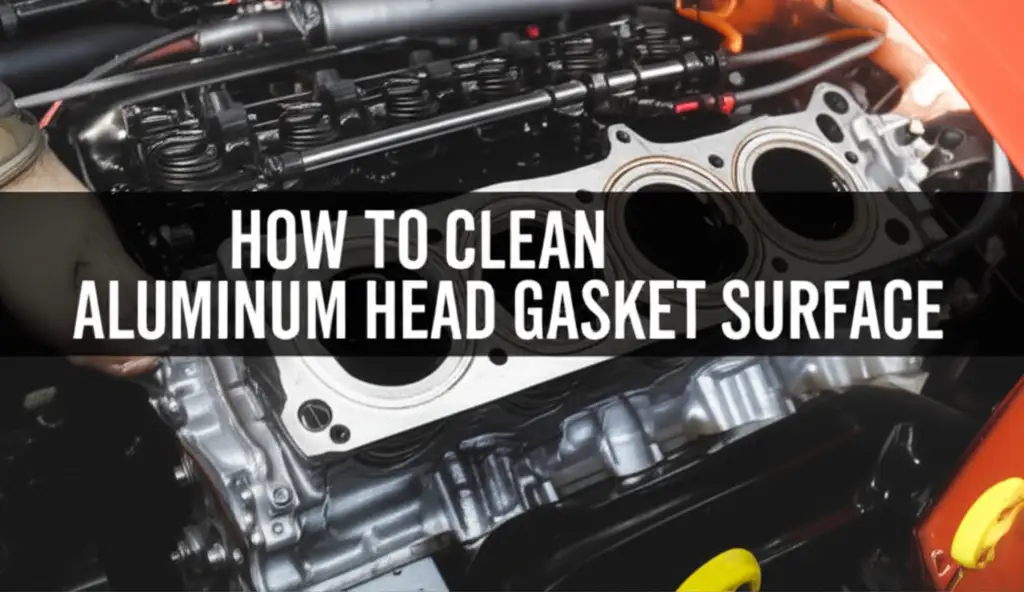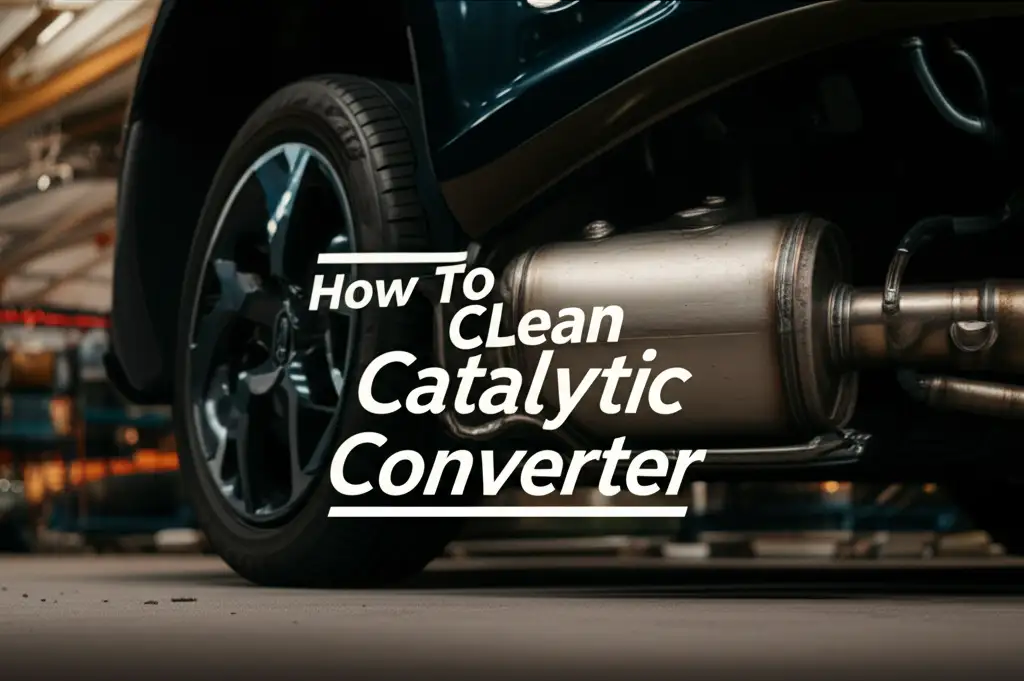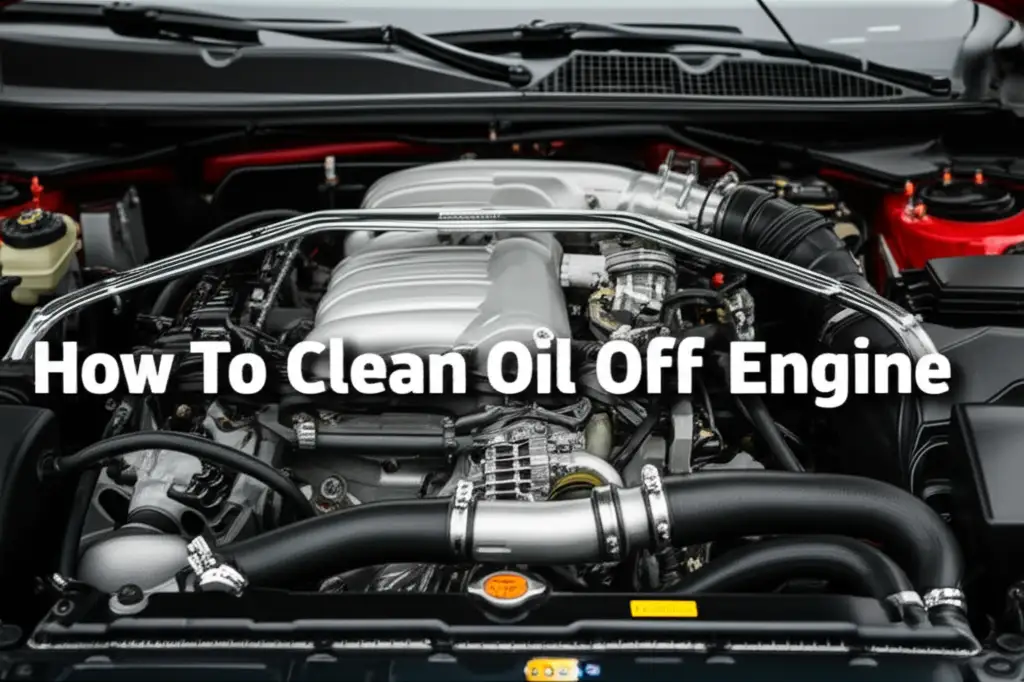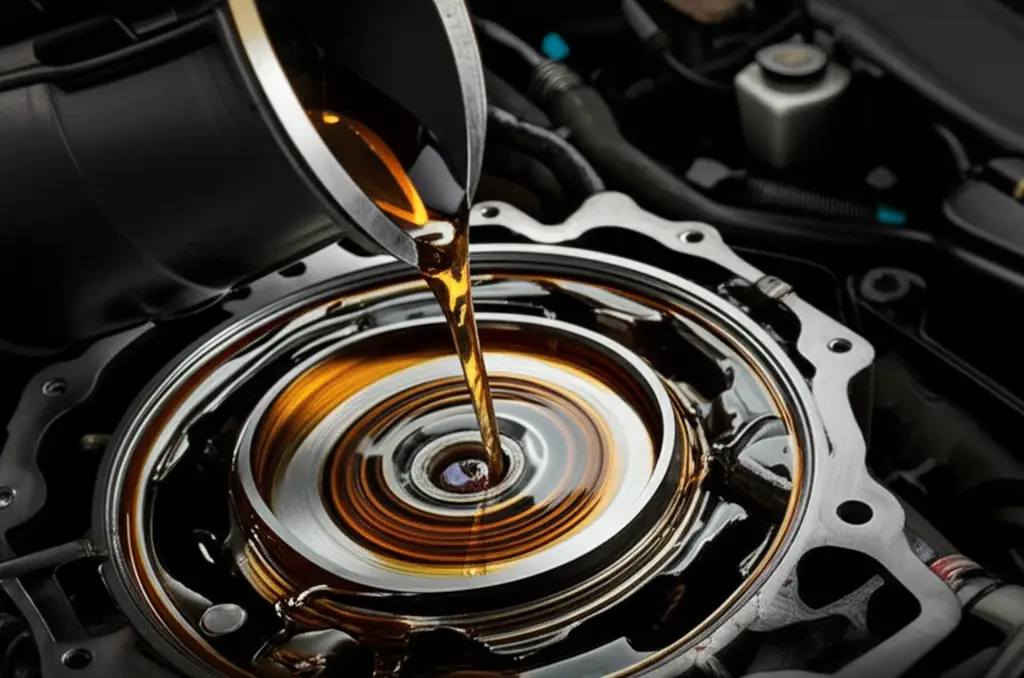· Automotive Maintenance · 16 min read
How To Clean Titanium Exhaust
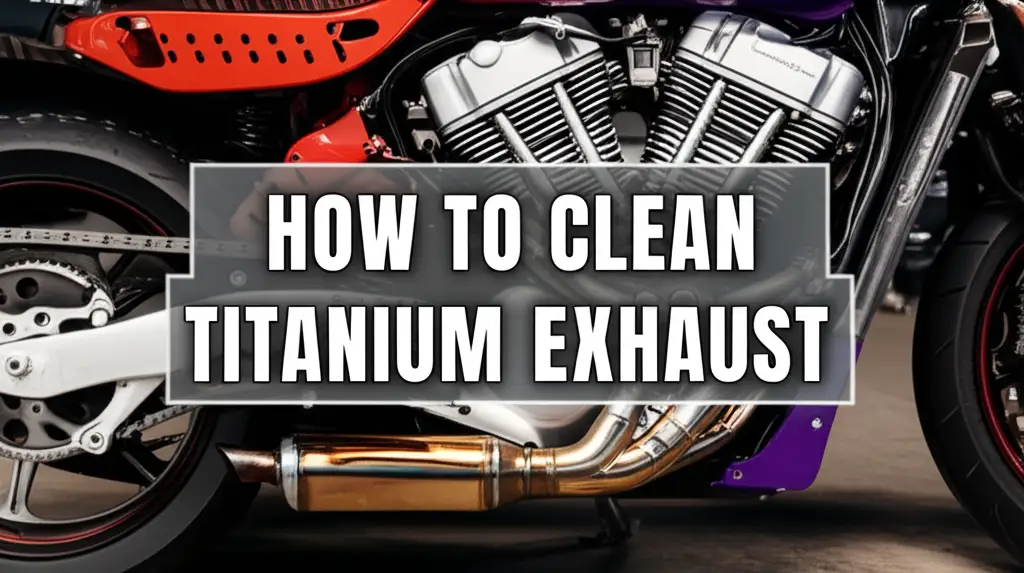
Restore Your Ride: How To Clean Titanium Exhaust Safely
Your vehicle’s exhaust system is a key part of its performance and appearance. If you own a vehicle with a titanium exhaust, you know it stands out. Titanium offers unique properties like light weight and strength. This material also develops a distinct look over time. Keeping your titanium exhaust clean maintains its beauty and protects its finish. It can be a simple task when you know the right steps.
This guide will show you how to clean titanium exhaust components properly. We will cover why titanium discolors and what tools you need. I will walk you through gentle cleaning methods for everyday dirt. We will also address stubborn bluing or browning. Finally, I will share tips for protecting your exhaust long-term. You will learn how to keep your titanium exhaust looking its best.
Takeaway
- Understand Titanium: Titanium develops unique color changes due to heat.
- Gentle Cleaning is Key: Always start with mild soap and water.
- Address Discoloration Safely: Use specialized metal polishes for bluing.
- Protect the Finish: Apply a ceramic coating or sealant for lasting shine.
- Avoid Harsh Chemicals: Never use abrasive cleaners or steel wool.
To clean a titanium exhaust, begin by allowing it to cool completely. Use mild automotive soap and water to wash away surface grime. For stubborn discoloration or bluing, apply a non-abrasive titanium-specific metal polish with a soft microfiber cloth, working in small sections. Finish by wiping clean and applying a protectant.
Understanding Titanium Exhaust Systems
Titanium is a premium material for exhaust systems. It offers incredible strength and lightness. This helps reduce overall vehicle weight. Many high-performance cars and motorcycles use titanium exhausts.
However, titanium has unique characteristics when exposed to heat. The exhaust gases reach very high temperatures. This heat causes the titanium to oxidize. The oxidation process creates distinct color changes. This includes shades of blue, purple, brown, and gold. This color is often called “bluing” or “browning.” It is a normal part of titanium ownership. It shows the metal has experienced heat.
Road grime, oil, and carbon buildup also stick to the surface. These elements can hide the natural beauty of the titanium. Regular cleaning removes these contaminants. It helps maintain the metal’s unique aesthetic. Understanding these properties helps you choose the correct cleaning methods. You can preserve both the function and appearance of your system.
Titanium is also highly resistant to corrosion. This makes it durable in harsh road conditions. Despite its strength, its surface can scratch. This means you must use soft tools and gentle cleaners. Avoiding scratches helps keep the finish smooth. Proper care ensures your titanium exhaust lasts for many years.
Essential Tools and Supplies for Cleaning Titanium Exhaust
Before you begin cleaning, gather your tools. Having everything ready makes the process smoother. You will need items that are safe for titanium. Using the wrong products can damage the finish. I always recommend using high-quality supplies.
Here is a list of what you will need:
- Bucket: Use for mixing your cleaning solution.
- Mild Automotive Soap: Choose a pH-neutral car wash soap. Dish soap can strip waxes and cause streaks. I find specific car soaps work best.
- Soft Microfiber Towels: You will need several for washing and drying. Microfiber is gentle and highly absorbent. It prevents scratches on the delicate surface.
- Soft Bristle Brush or Wash Mitt: A non-abrasive brush helps dislodge dirt. A wash mitt is also excellent for applying soap gently.
- Garden Hose with Running Water: For rinsing off soap and dirt. Ensure you have good water pressure for effective rinsing.
- Titanium-Specific Metal Polish: This is crucial for addressing bluing or stubborn stains. Do not use generic chrome polish. Some polishes designed for stainless steel may also work if they are non-abrasive. Compare it to how you might clean stainless steel exhaust. Titanium needs a different approach.
- Rubbing Alcohol (Isopropyl Alcohol): Useful for final degreasing before polishing or protecting.
- Protective Wax or Ceramic Coating: For long-term protection of the cleaned surface. This helps repel dirt and water.
- Gloves: Protect your hands from cleaners and polishes.
- Eye Protection: Essential when working with chemicals or spraying water.
Having these items ready ensures a safe and effective cleaning process. Make sure all cloths are clean and free of debris. Small particles caught in a cloth can cause scratches. Quality tools give quality results.
Step-by-Step Cleaning Process for Light Discoloration
For light dirt, dust, and road grime, a simple wash is often enough. This regular cleaning prevents buildup. It helps maintain the original look of your exhaust. I perform this routine cleaning often. It keeps deeper issues from forming.
Follow these steps for a basic titanium exhaust wash:
- Allow Exhaust to Cool: This is the most important first step. Never clean a hot exhaust. Hot metal can warp if suddenly cooled with water. It also makes cleaning products evaporate too quickly. Wait until the exhaust is cool to the touch. This can take an hour or more after a drive.
- Rinse Thoroughly: Use a garden hose to rinse the entire exhaust system. This removes loose dirt and debris. A good rinse prevents scratching during the wash phase. Ensure water reaches all nooks and crannies.
- Prepare Cleaning Solution: Mix your mild automotive soap with water in a bucket. Follow the product’s directions for dilution. You want a good amount of suds. This helps lift dirt from the surface.
- Wash the Exhaust: Dip your soft microfiber wash mitt or soft-bristle brush into the soapy water. Gently wash the entire titanium exhaust surface. Work in small sections if the exhaust is large. Use light pressure; avoid scrubbing aggressively. The goal is to lift dirt, not abrade the surface.
- Rinse Again: Rinse the exhaust thoroughly with clean water. Make sure all soap residue is gone. Soap residue can leave water spots or dull the finish. Rinse from top to bottom.
- Dry Completely: Use a clean, dry microfiber towel to dry the exhaust. Drying prevents water spots. It also prepares the surface for any further treatment. Pat dry instead of rubbing vigorously. I usually dry it right away. This ensures no water marks are left behind.
This gentle method is perfect for weekly or bi-weekly maintenance. It keeps your titanium exhaust looking fresh. It also extends the life of more intensive polishing efforts.
Tackling Stubborn Stains and Bluing/Browning
Titanium’s unique bluing and browning are a result of heat. These colors are normal, but sometimes you want to restore a more uniform look. Carbon buildup and oil stains also need more aggressive treatment. You need specialized products for these tasks. Regular soap will not remove these deep discolorations.
Here’s how to deal with stubborn marks and bluing:
- Prepare the Area: Ensure the exhaust is clean and dry as per the previous steps. You want a clean canvas for your polish. If any dirt remains, the polish will just spread it around. This makes the job harder.
- Choose the Right Polish: Select a metal polish specifically for titanium or high-performance exhaust metals. Avoid abrasive polishes or compounds not designed for titanium. These can scratch or damage the unique finish. Always test a small, inconspicuous area first. Some polishes are made to restore the natural titanium color. Others might be for general shine.
- Apply Polish: Put a small amount of titanium metal polish onto a clean microfiber applicator pad or towel. Do not over-apply the product. A little goes a long way.
- Work in Small Sections: Apply the polish to a small area of the exhaust. Rub it onto the surface with light to medium pressure. Use a circular motion. You will see the polish turn dark as it removes discoloration. This darkening indicates it is working. Keep working the area until the stain or bluing begins to fade.
- Buff Off Residue: Use a separate clean, dry microfiber towel to buff off the polish residue. Use a fresh part of the towel for each pass. Buff until the surface shines. Repeat this process for all affected areas.
- For Extreme Bluing/Browning: If the bluing is very deep, multiple applications may be necessary. Some owners embrace the bluing as a sign of performance. If you want to reduce it, patience and repeated effort are key. Specialized exhaust bluing removers exist. These are typically stronger chemicals. Always follow their instructions carefully.
- Final Wipe Down: After polishing all sections, give the entire exhaust a final wipe with a clean, dry microfiber towel. You can also use a light mist of rubbing alcohol on a towel for a final degrease. This ensures no polish residue remains. This creates a perfect surface for protection.
Remember that titanium’s color changes are part of its character. Aggressively removing all bluing might not be achievable or desired. The goal is a clean, well-maintained finish. The process for cleaning a stainless steel exhaust might involve harsher abrasives. Titanium requires a gentler touch.
Protecting Your Titanium Exhaust for Lasting Shine
Cleaning your titanium exhaust brings back its luster. Protecting it keeps that shine longer. It also makes future cleaning easier. A protective layer acts as a barrier. It shields the metal from dirt, grime, and heat.
There are several options for protecting your titanium exhaust:
Exhaust Waxes/Sealants:
- These products create a sacrificial layer over the metal. They are often liquid or paste forms.
- Apply a thin, even coat after cleaning and polishing. Allow it to cure as per product instructions.
- Buff off any excess with a clean microfiber towel.
- Waxes and sealants typically offer protection for a few weeks to a few months. Reapply regularly, especially after washing.
- These products repel water and make dirt less likely to stick.
Ceramic Coatings:
- Ceramic coatings provide much longer-lasting protection. They form a semi-permanent bond with the surface.
- These coatings offer excellent heat resistance. They also provide superior hydrophobic properties. Water beads right off.
- Application usually requires a very clean surface. Sometimes, a degreaser like isopropyl alcohol is needed first.
- Apply the coating in a well-ventilated area. Follow the manufacturer’s specific instructions. Curing times vary.
- Ceramic coatings can last for a year or more. They are an excellent investment for dedicated enthusiasts. They make routine washing incredibly simple.
- I find a ceramic coating makes the exhaust much easier to maintain. Dirt simply slides off.
Regular Maintenance:
- Even with protection, regular cleaning is vital. A quick rinse and wipe down after each ride prevents buildup.
- Inspect your exhaust for any new spots or damage. Address them promptly.
- Do not let dirt or grime sit on the exhaust for long periods. This makes it harder to remove later.
- Keep your exhaust cool before any touch-up cleaning.
A protected titanium exhaust looks better. It also lasts longer. This small step saves you time and effort in the long run. It maintains the value and appearance of your vehicle.
Common Mistakes to Avoid When Cleaning Titanium Exhaust
Cleaning titanium requires a delicate touch. This metal, while strong, can be sensitive to certain chemicals and abrasives. Avoiding common mistakes prevents damage. It ensures your exhaust remains in top condition. I have seen owners make these errors. They can ruin the finish.
Here are mistakes to steer clear of:
- Cleaning a Hot Exhaust: As mentioned, this is a big no-no. Water hitting hot metal can cause thermal shock. This leads to cracks or warping. Always allow the exhaust to cool completely before touching it. Patience is key here.
- Using Abrasive Cleaners or Tools:
- Never use steel wool, scouring pads, or abrasive sponges. These will scratch the titanium surface instantly.
- Avoid abrasive polishing compounds not specifically for titanium. Products meant for chrome or aluminum can be too harsh.
- Even harsh brushes can leave swirl marks. Stick to soft microfiber towels and gentle brushes.
- Using Harsh Chemicals:
- Bleach, strong acid-based cleaners, or highly alkaline solutions can damage titanium. They might cause etching or discoloration.
- Avoid oven cleaners or aggressive degreasers. These are far too strong for delicate titanium.
- Stick to pH-neutral automotive soaps and specialized titanium polishes.
- Wiping Dry with Dirty Towels: Using a towel with embedded dirt or grit will scratch the surface. Always use clean microfiber towels for every step. Wash your towels regularly.
- Ignoring Manufacturers’ Recommendations: If your exhaust manufacturer provides specific cleaning instructions, follow them. They know their product best. Some aftermarket coatings or finishes may require unique care.
- Applying Too Much Pressure: Scrubbing too hard does not make it cleaner. It just increases the risk of scratching. Let the cleaning products do the work. Use gentle, consistent pressure.
- Leaving Water Spots: Allowing water to dry on the exhaust can leave mineral deposits. These spots are hard to remove later. Always dry the exhaust thoroughly after rinsing.
By avoiding these pitfalls, you protect your investment. Your titanium exhaust will maintain its unique luster for many years. Proper care means no costly repairs later. It is simple to do it right the first time.
Maintenance Schedule and Long-Term Care
Establishing a regular maintenance routine is crucial for your titanium exhaust. Consistent care prevents serious issues. It also ensures the exhaust looks good all the time. I follow a simple schedule. This makes the job less daunting.
Here is a recommended maintenance schedule:
- After Every Ride (or weekly for daily drivers):
- Perform a quick visual inspection. Check for any new road grime or bug splatter.
- Once cooled, give the exhaust a quick rinse with water.
- Wipe it down with a clean, damp microfiber towel. This removes fresh contaminants before they set. This is a very easy way to keep it clean.
- Monthly (or every few washes):
- Perform a full wash as described in the “Step-by-Step Cleaning Process” section.
- Reapply a protective wax or sealant if you are using one. This replenishes the protective layer.
- This routine keeps surface dirt from building up.
- Quarterly (or every few months, as needed):
- Assess for deeper discoloration or bluing.
- If present, use a titanium-specific metal polish to address these areas. Follow the steps in “Tackling Stubborn Stains.”
- This is the time for more intensive detailing.
- Annually (or when reapplying):
- If you use a ceramic coating, check its hydrophobic properties. Reapply the coating if water no longer beads effectively.
- This full re-application ensures maximum, long-term protection.
- Consider professional detailing if you prefer.
Signs Your Exhaust Needs Attention:
- Dullness: The titanium loses its vibrant shine.
- Increased Bluing/Browning: The heat discoloration becomes more prominent than desired.
- Carbon Buildup: Black sooty deposits appear, especially near the tips.
- Water Spots: Hard water stains are visible after drying.
- Grime Buildup: Road dirt and oil begin to obscure the metal.
By following a consistent schedule, you make cleaning easier. You also extend the life and beauty of your titanium exhaust. This care preserves its unique character. It also protects your vehicle’s value. It is a small effort for a big reward. Proper exhaust care is similar to ensuring a furnace exhaust pipe is clear for optimal function. Both rely on consistent maintenance.
Advanced Tips for Restoring and Maintaining Titanium Finish
Beyond basic cleaning, some advanced techniques help preserve or restore your titanium’s finish. These are for enthusiasts who want the absolute best appearance. They address specific visual elements of titanium. I have found these methods make a noticeable difference.
Understanding the “Rainbow” Effect:
- Titanium naturally changes colors with heat. This creates a “rainbow” or “anodized” look.
- This effect is highly prized by many owners. It is a sign of performance and heat cycling.
- If you like this effect, avoid aggressive polishing. Polishing will reduce these colors.
- Focus on gentle cleaning and protection to maintain the existing color. Let the titanium tell its story.
Specialized Detailer Sprays:
- Some automotive detailer sprays are safe for titanium. These can be used for quick touch-ups.
- They often contain polymers that add a light layer of protection.
- Use these after a ride to remove dust and light grime. They are not for heavy cleaning.
- They give a quick shine without needing a full wash.
Preventative Measures During Driving:
- Avoid driving directly behind vehicles that are known to drop oil or dirt.
- If you drive on dusty roads, clean your exhaust sooner.
- Consider mud flaps or splash guards if your vehicle allows. They reduce road grime hitting the exhaust.
- These small actions reduce how much cleaning is needed later.
Professional Detailing:
- If you are unsure, or if your exhaust has significant issues, consider professional detailing.
- Detailers have specialized tools and products. They also have experience with different materials.
- They can often restore finishes that seem beyond DIY help. This ensures no damage occurs.
Handling Carbon Buildup Inside Tips:
- Carbon buildup inside the exhaust tips is common.
- Use a dedicated exhaust tip cleaner or a strong degreaser. Apply it with a brush or cloth.
- For stubborn carbon, a non-abrasive plastic scraper can help. Be very careful not to scratch the inner surface.
- Follow up with a rinse and wipe down. This keeps the inside of the tips looking as good as the outside.
- This is a detailed process, similar to the thoroughness needed to clean a ceiling for a spotless finish.
Maintaining your titanium exhaust involves more than just cleaning. It involves understanding the material. It also means consistent, correct care. These advanced tips help you keep your exhaust looking truly exceptional.
FAQs About Cleaning Titanium Exhaust
What causes titanium exhaust to turn blue or brown? Titanium turns blue or brown due to extreme heat from exhaust gases. This process is called heat oxidation. It’s a normal characteristic of titanium. The color changes show the metal has experienced high temperatures. This bluing is often desired by enthusiasts.
Can I use regular car wash soap on my titanium exhaust? Yes, you can use a pH-neutral automotive car wash soap for regular cleaning. Avoid harsh dish soaps or strong detergents. These can be too aggressive for titanium. Always rinse thoroughly and dry completely afterward.
Is it safe to polish titanium exhaust? Yes, it is safe to polish titanium exhaust, but you must use the correct product. Use a non-abrasive metal polish specifically designed for titanium or high-performance exhaust materials. Avoid abrasive polishes or compounds. They can scratch or damage the unique finish.
How often should I clean my titanium exhaust? For light dust and grime, a quick rinse and wipe-down after every ride or weekly is ideal. A full wash with soap should be done monthly. Polishing for discoloration can be done quarterly or as needed. Regular care prevents heavy buildup.
Can I use steel wool or abrasive pads on titanium? No, absolutely not. Never use steel wool, abrasive pads, or harsh brushes on titanium. These materials are too abrasive. They will cause irreparable scratches and damage to the unique finish. Always use soft microfiber towels.
What is the best way to prevent future discoloration? You cannot fully prevent the heat-induced bluing of titanium. This is a natural effect of high temperatures. However, applying a quality ceramic coating or exhaust sealant helps protect the surface from road grime and environmental contaminants. This makes cleaning much easier.
Conclusion
Cleaning your titanium exhaust system is a rewarding task. It preserves its unique beauty and performance. We have covered everything from understanding titanium’s properties to tackling stubborn discoloration. Remember, the key is gentle care and consistency. Always use mild products and soft cloths. This protects the delicate finish of your exhaust.
Regular cleaning prevents dirt from setting in. Timely polishing can restore its original luster. A good protective coating ensures lasting shine and easier maintenance. By avoiding common mistakes, you ensure your titanium exhaust remains a highlight of your vehicle. You can now confidently clean titanium exhaust components. Your vehicle will look its best. Keep that premium gleam by making exhaust care a regular part of your vehicle maintenance.
- titanium exhaust cleaning
- exhaust maintenance
- car detailing tips

